Many gardeners see renting as a barrier to maximising productive gardening in their rental space. However, you can easily generate abundance of home-grown food in a rental property. I spent years hopping from one rental property to the next, prior to our move to our forever home in Kyneton. I took my garden with me wherever I went. Here’s my tips for getting the most productivity from your rental garden. Make sure you check out the bonus video at the end of the article, with plenty of extra tips for tenants wanting to make the most out of rental gardens.
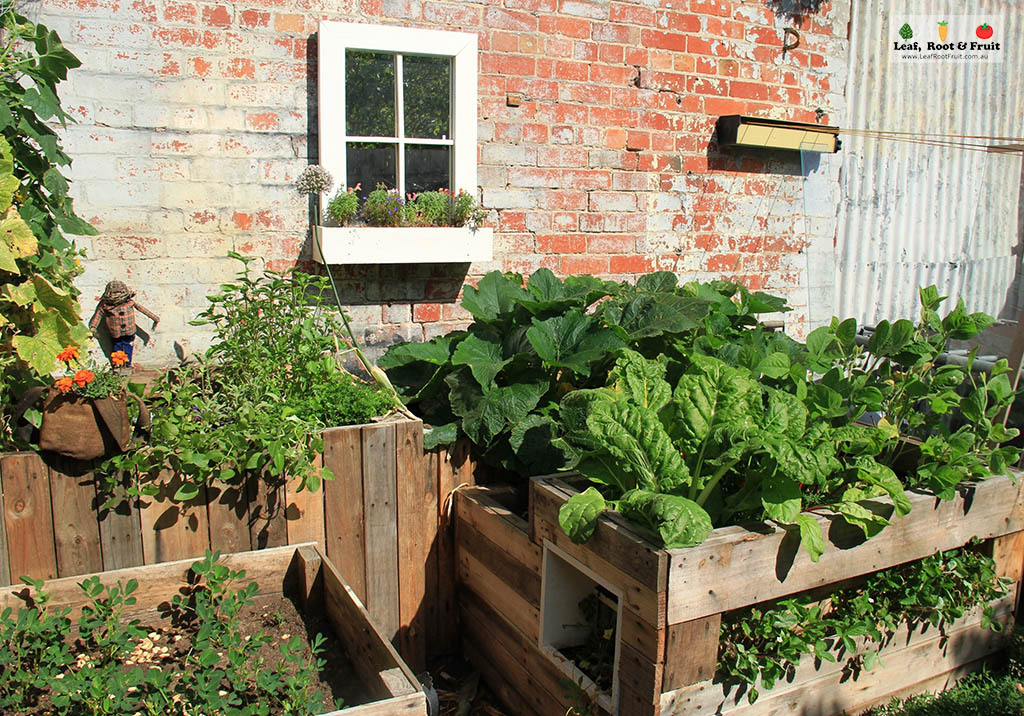
Your landlord: Do you ask for permission or forgiveness?!
A great relationship with your landlord is the key to success. Consider discussing your plans with the landlord before committing to renting the property. We have found that some landlords are very flexible in their approach and are keen to see their property put to good use.
Have a good plan, and even a hand drawn design can help to convey your ideas to the landlord. Explain your exit strategy and how you plan to leave the garden when your lease ends.
However, friends of mine, have had the unfortunate experience of discussing their plans with their landlord, only to find that the landlord refused their requests. In this instance, our friends wished they’d asked for forgiveness at the end of their tenancy rather than permission!
At the end of the day, as long as you “make right” any alterations or works you carry out then you should still get your bond back from the landlord.
Our friends at 3000 Acres have some great resources for dealing with your landlord.
Vegetable gardening for renters
Most rental agreements are for 12 months. Depending on your individual situation, you may not have much clarity about the future and how long you will reside at the property. Therefore, you should start putting your energy into growing annual plants such as vegetables. Most vegetables take less than 6 months to mature from planting. Careful planning should ensure you can harvest plenty of tasty produce before you end your tenancy. There’s quite a few ways to grow veggies in rental gardens.
Growing vegetables in pots
Pots and other containers can be a quick and easy way to get started. They have little impact on the existing garden and can be a great way to make use of concrete, paving or decking areas. Pots are easily re-locatable, so you can take them with you to your next rental property.
Anything with good drainage holes, can be used as a growing container. I avoided using polystyrene boxes though, as they are not UV stable and tend to deteriorate quite quickly, spreading little white foam balls everywhere.
The most critical aspect of growing vegetables in pots, is the potting mix that you use. See our potting mix trial for more information on this.
If you only have a small space to work with, then focus on growing herbs and leafy greens. These tend to be the most productive in small spaces. See my Philosophy of Edible Gardening for more information on why I prioritise leafy greens. If you have plenty of outdoor space, then pretty much any vegetable can be grown in containers, provided they are large enough.
Use the largest pots you can manage. It is far better to grow three plants in one huge pot, rather than the same three plants in three small posts. Growing plants in large pots can help to reduce the fluctuations in soil temperature, soil moisture and soil nutrient levels. This enables plants to thrive, rather than having to cope with constantly changing conditions.
Tomatoes can be grown in pots. Use 40cm sized pots for each plant as a minimum, although 50cm pots would be better.
Most vegetables will benefit from a saucer being placed underneath the pot. This will help to catch any water-runoff and deliver it back to the soil via capillary action.
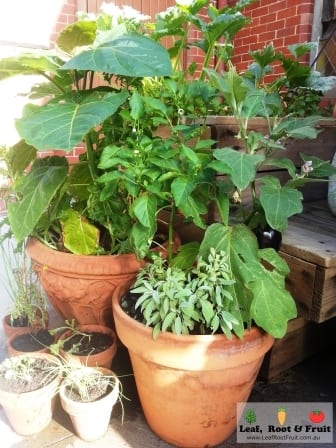
Installing raised beds (including wicking beds) in your rental garden
Raised beds can be useful for making the most of concreted or paved areas. They could be corrugated iron kits, timber or even constructed from old pallets (just make sure the pallets haven’t been treated with chemicals such as Methyl Bromide). See this post for more details on options for raised beds. Consider converting your raised beds to wicking beds.
Your plants should thrive in large, raised beds far better than they would in pots, provided the beds are filled with quality soil. However, the downside of raised beds, is moving them at the end of the tenancy. If the beds need to be removed from the premises, then you will need to shovel all the soil out (and move it offsite) then deconstruct the beds and move them. It is doable (I’ve done it!) but it’s just very time consuming and labour intensive.
Growing directly in the ground
This is my preferred method for rental gardening. If your rental property is blessed with a large lawn area then you can potentially turn this into a veggie patch. It is relatively easy to turn lawn to veggie patch and vice versa. A packet of lawn seed at the end of your tenancy will probably be far cheaper than the materials required for setting up raised beds at the start of it. More on growing in the ground here.
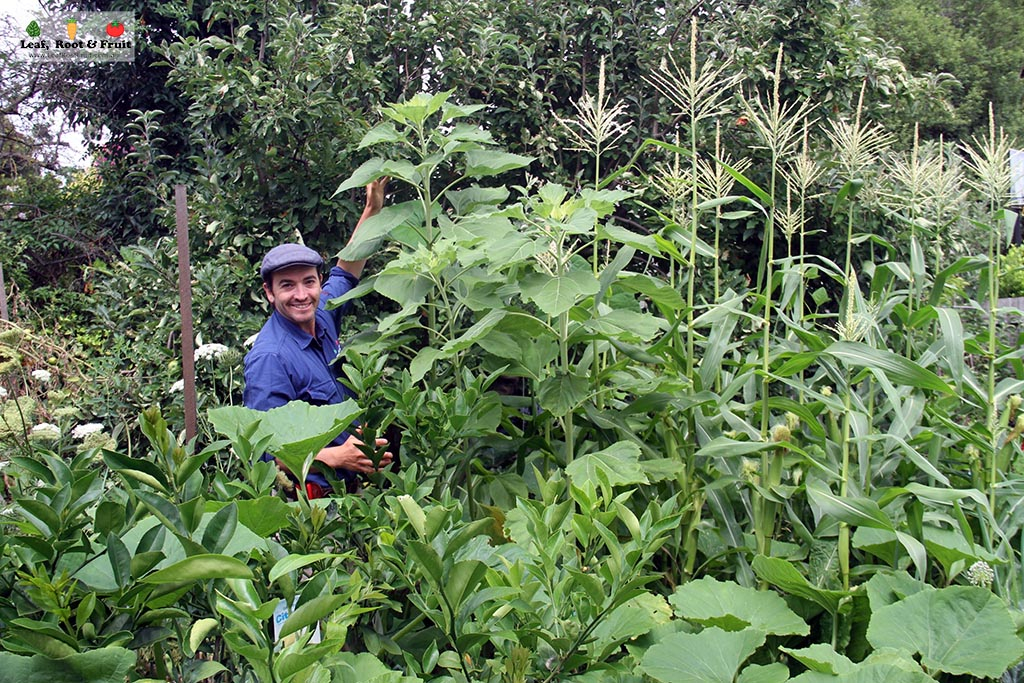
When you are looking for a rental property then perhaps look for one with a neglected lawn rather than a carefully manicured one. Then get to work removing the turf. You can hire a machine called a sod cutter, to make this super easy or it can be done manually with simple garden tools.
Add lots of compost to get the vegetables off to a flying start and get planting. More on soil preparation here.
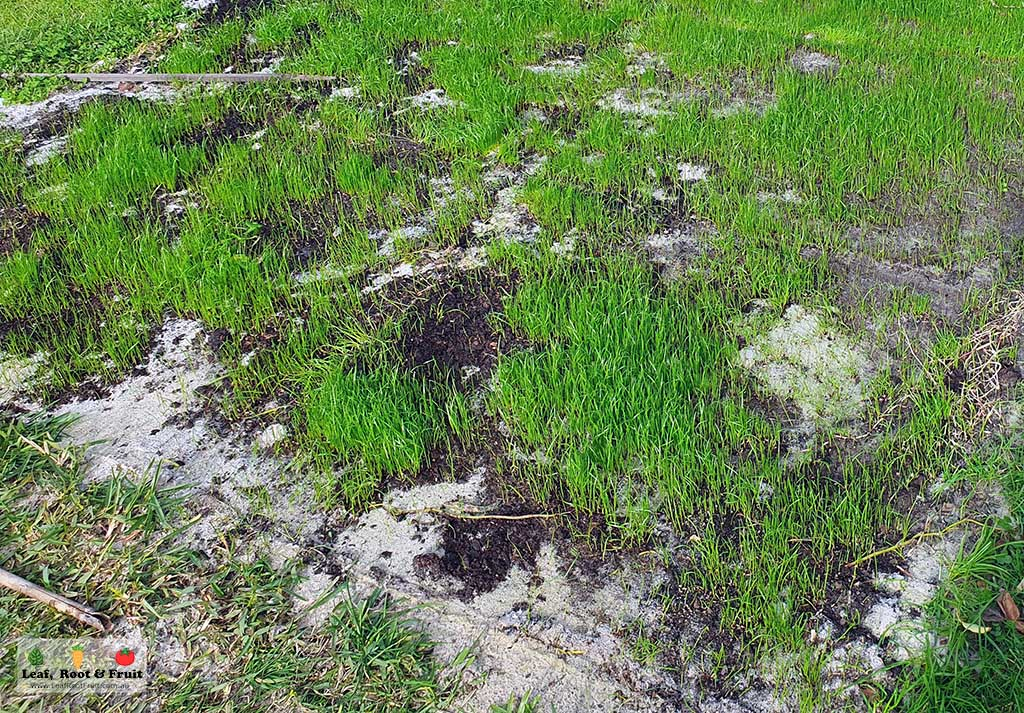
At the end of your tenancy, you’ll probably need to remove all remnants of the vegetable patch, re-level the area and sow some lawn seed. Make sure you protect the lawn seed from pigeons and other birds and water it well to ensure that it establishes quickly. A lush green lawn is more likely to ensure your bond is paid in full. I highly recommend that you plan your exit from the property months in advance. You could even try and time your move to coincide with the end of harvest. May to July is a great time for Melbourne based vegetable gardeners to consider moving house!
Growing fruit trees as a tenant
I am often asked about renters getting a head start on their fruit trees in pots. This is so that the trees are well established, when they finally own their own home. Generally, I would avoid doing this, as the fruit trees are likely to become pot bound. I’ve also discovered there’s a hidden cost of growing fruit trees in pots, more on that here.
If you plan to one day have a ‘forever home’, then you would be best to purchase and plant young, bare-rooted stock after you have moved, rather than trying to get a head start as a renter. Planting young trees into your ‘forever garden’ will ensure healthier and more productive trees in the long run.
That being said, it can still be fun to grow a few fruit trees in pots to gain more confidence in managing and pruning them. As a renter, I certainly grew plenty of fruit trees in pots. Generally speaking, I’ve followed my own advice and avoided planting them into our ‘forever garden’, although there’s been a few sentimental exceptions!
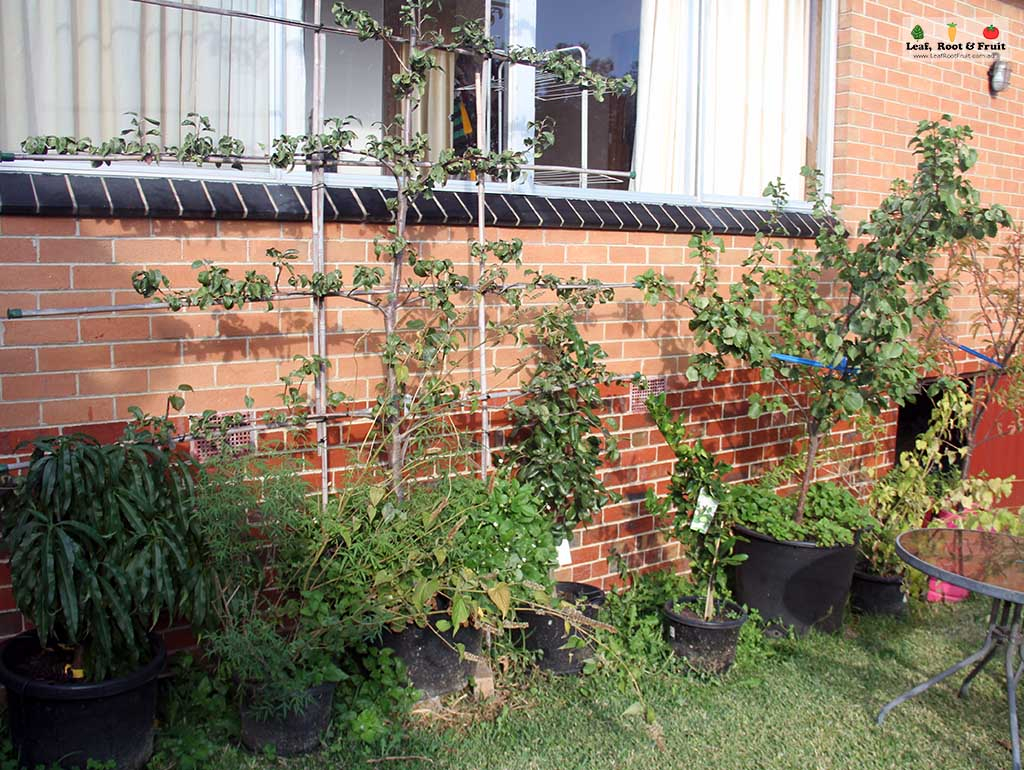
Growing fruit trees in pots
The same advice for growing vegetables in pots applies to growing fruit trees in pots. Use high quality potting mix and the largest pot you can manage. As a minimum your fruit tree should be planted into a 50cm pot. Then aim to pot it up into something bigger every second year. Most fruit trees will benefit from a saucer being placed under the pot. Read more about growing fruit trees in pots here.
Citrus are great options for potted trees, as are dwarf stone fruit and dwarf apples. See my guide to rootstocks for more information on dwarf fruit trees. You may also want to think about the timing of your fruit tree harvests.
You can use bamboo canes to train the fruit trees into an espalier shape.
Growing berries in rental gardens
This is where the renter is on a level playing field with the home-owner!
Blueberries need amazing drainage and won’t grow well planted directly into clay soil. Most gardeners in Melbourne would need to grow blueberries in pots, regardless of whether it is ‘forever home’ or a rental. So feel free to grow as many blueberries in pots as you like. Avoid placing saucers under the pots of blueberries, as even this can affect the drainage enough to cause issues in blueberries. Potted blueberries can be incredibly productive.
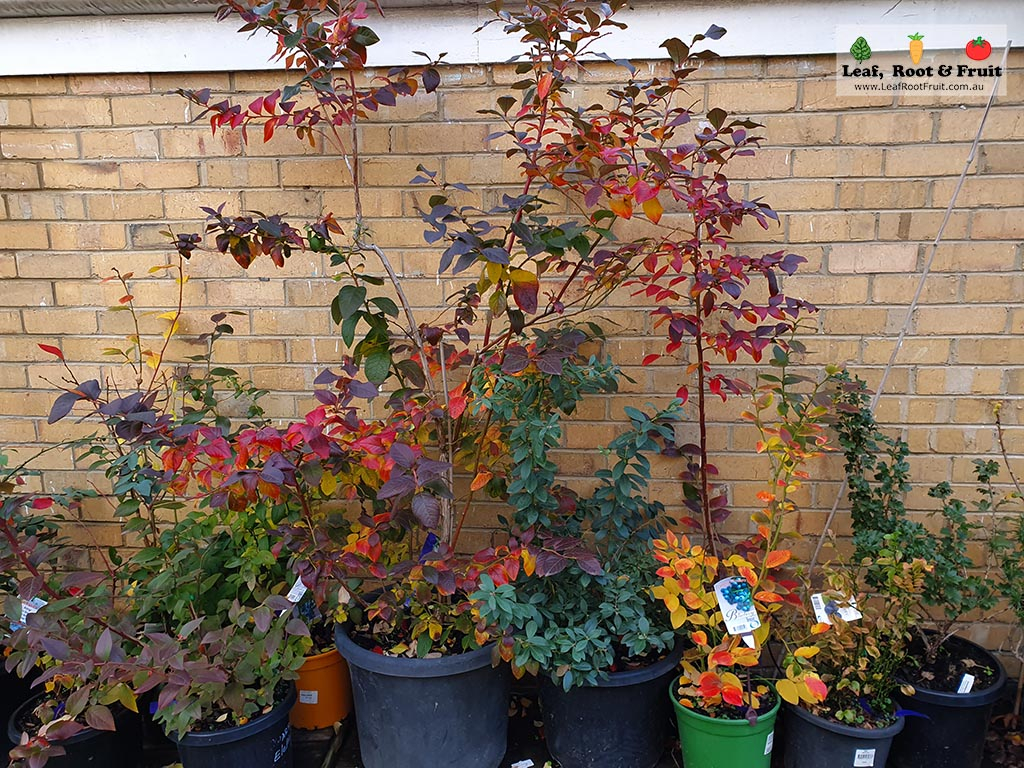
Similarly, raspberries should be grown in a confined space. Either a well constructed and sealed off raised bed or a pot will prevent their runners from invading other areas of the garden. So again, a renter shouldn’t see themselves as being disadvantaged, when growing raspberries. Getting a head start with raspberries, enable canes that are easily divided and planted into a large ‘forever garden’, for those fortunate to find one.
Other berries that suit growing in pots, include thornless blackberries, red currants and strawberries. However, I’ve found that gooseberries, black currants and jostaberries don’t produce well in pots. Brambles such as boysenberry and loganberry can grow very vigourously. They can be productive enough in pots, but could be challenging to maintain and very difficult to move!
Irrigation systems for renters
Nothing beats hand watering, to stay connected to your garden. Daily watering in summer, ensures that you remain observant to pest attack, diseases, water requirements and most importantly when produce is ready for harvest.
However, most of us lead busy lives and automating some of the irrigation can be the only way we can manage this task. Tap timers are probably the best option for a renter. They are relatively cheap to buy, easy to install and similarly easy to remove at the end of the tenancy. However, be aware that when a tap timer fails, it usually floods. That is, it turns on and then doesn’t turn off. This can lead to water damage and rather expensive water bills. Tap timers are all prone to failure, especially the cheaper models.
Read more about irrigating the vegetable patch here.
Chickens and quail in rental properties
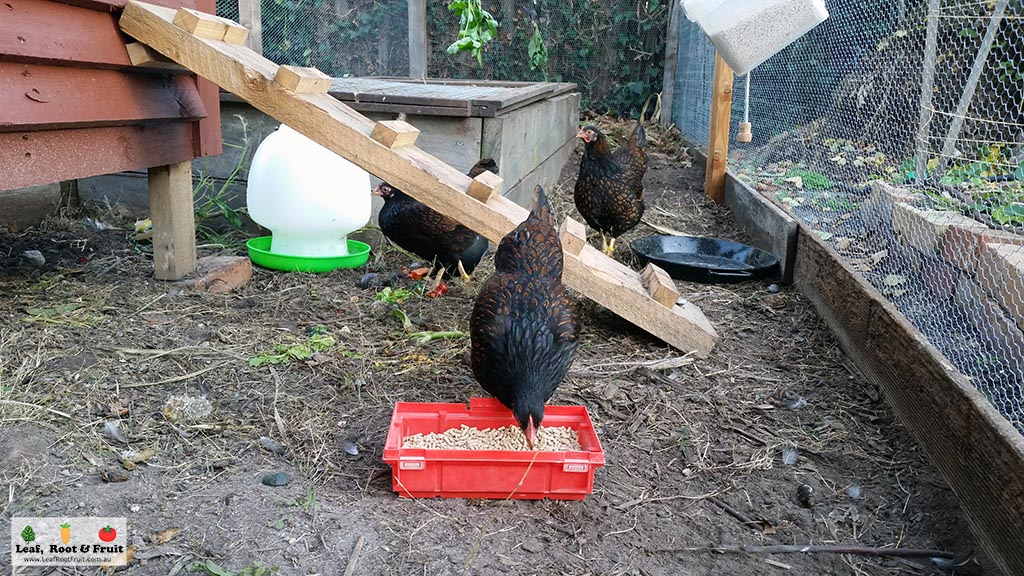
Keeping chickens for a renter is not much different to a homeowner keeping chickens. Design of the chicken coop should factor in ease of deconstruction, to enable it to be moved to another property. Avoid unleashing chickens into established gardens of a rental property, as they will soon wreak havoc. Converting a patch of lawn into a chicken run requires the same exit strategy, as converting a lawn to a vegetable patch.
Avoid voracious breeds, especially hybrids such as ISA Browns and Hylines in smaller gardens. These birds forage heavily and can be very destructive to small gardens. Bantams are better choices for small gardens as they tend to scratch under fruit trees much less and cause less damage. Read more about integrating chickens into your garden here.
Quail only need a fraction of the space needed by chickens. They can be a great option for small spaces.
Remember to ensure your feathered friends have good access to food and water. Check your local council rules regarding keeping poultry. Ensure your chicken coop is fully fox proof. In my experience suburban foxes are far more plentiful and brazen than country foxes.
Composting for renters
There are plenty of options available to renters to create compost. Check out my Guide to Composting for more information on these options. Most rental properties should have room for a Hungry Bin Worm Farm or two. Bokashi is an option for smaller properties. Just avoid the dreaded rat hotels – they may be cheap but can create more issues in the garden than they solve!
Keeping bees in a rental property
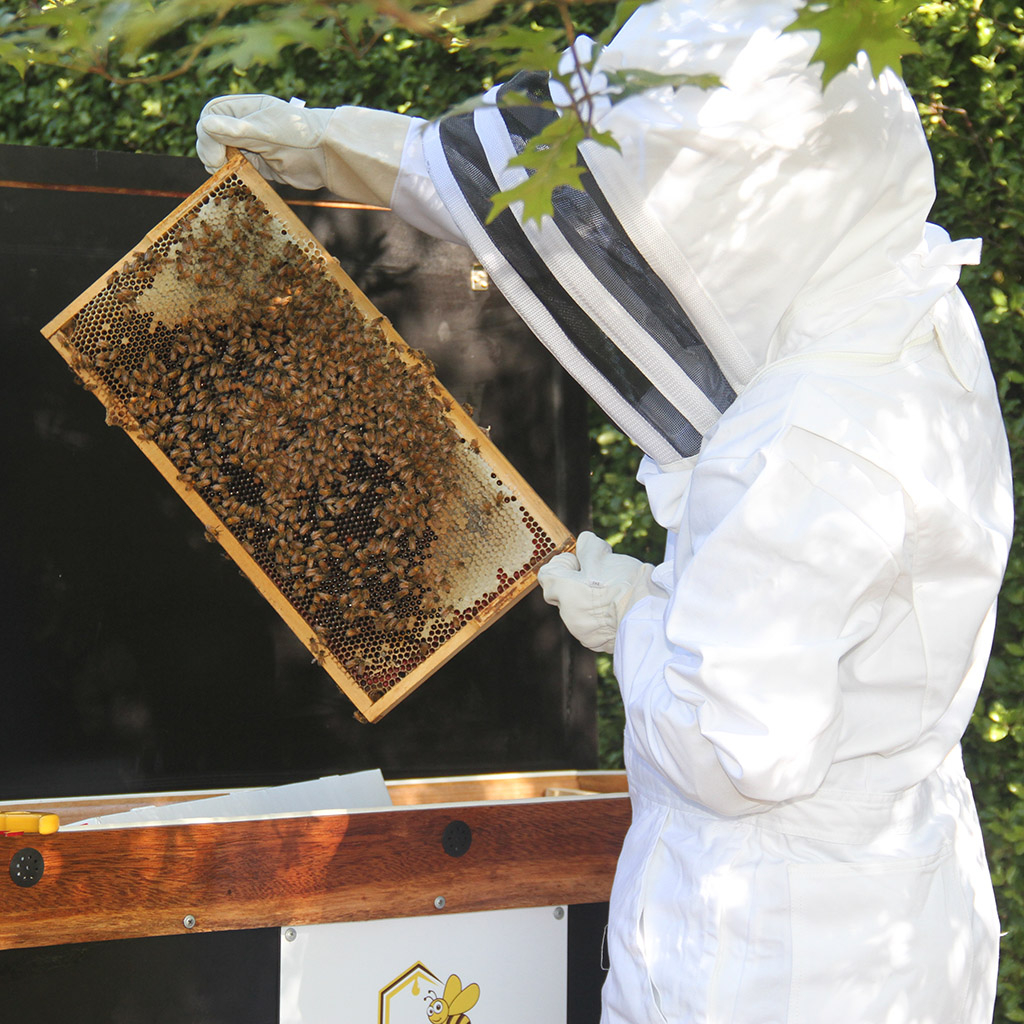
Believe it or not, but beekeeping is probably one of the most rental friendly and productive past times that you can take up. A beehive doesn’t take up much room and is reasonably portable. Bees have some pretty incredible navigation abilities. However, moving a hive a short distance can really mess with their internal compasses. When moving a bee hive you should move it less than 1m or greater than 10km.
When it comes time to move to your next property, you can either make sure it is further away than 10km. You could also arrange for your bees to take a holiday with some friends for a few weeks, while you move, then relocate them to your new property, once their navigation systems have been re-set.
The bottom line for productive rental gardens
Renting doesn’t have to limit your ability to grow your own food. Careful planning and a bit of creative thinking, can ensure that you get the most out of your tenancy and still receive your bond back.
Ideally, your productive garden will live on as a legacy, with a supportive landlord finding like-minded tenants to take over, that you have started.
Utilising food swaps and other community gardening groups can help to supplement your own produce. For example, it is easy for a renter to keep bees, so why not swap honey for someone else’s stone fruit?
Regardless of your approach, viewing each tenancy as a practice run will ensure that if you are ever fortunate enough to find a ‘forever garden’ that you will hit the ground running and avoid many basic mistakes.
My top tip for rental gardeners?… focus on growing berries in pots… They are super productive, tasty and easy to move from property to property.
What tips do you have for rental gardening? Please share them in the comments section below.
I recently put together a video on Edible Gardening for Renters for the My Smart Garden Program. Check it out for a few extra hints and tips for rental gardens.
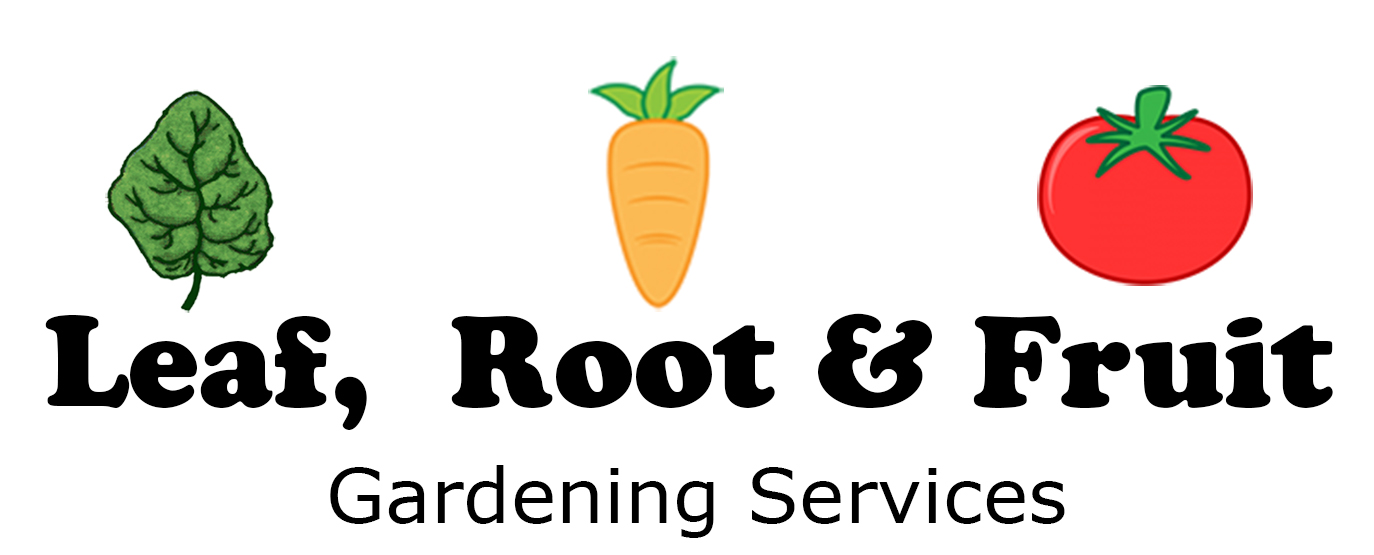

I have been following you for many years and over the years l have learnt so much from you. However, now its my turn to give back and hopefully can give some advice to you and your other readers.
I have been renting for nearly 10 years after re entering the rental market. I have always wanted an orchard but it was obvious it was never going to happen due to being financially destroyed from a work injury.
One day l decided that l was going to grow it in containers and have been doing it now for many years. There are some tips though to keep the trees healthy and strong. The most important is pruning. Regular late summer prunning to maintain shape and size rather than winter pruning yhat encourages new grow. However the biggest thing l found is to treat your fruit tree like a big bonsai and every 2 or 3 years remove the tree from its pot and remove between a third to half of the roots. This gives you a chance to refreshen the potting mix as well. The tree wont become root bound and will be very happy when it wakes up. I recommend doing it in the absolute dead of winter so the tree is sound asleep.
Another important thing that took me a while to get my head around is be realistic about harvest size. I do get quite a bit of fruit but l don’t get kilos and kilos that a in ground tree produces. Once you make peace with that then you can realise you can grow more varities.
Grapes also do really well in containers and would definitely add them to your garden.
I hope this helps someone out there. Just keep trying different ideas until you find something that works.
Wow…. some fantastic advice there Steve. Thanks for sharing and for your kind words of wisdom. You have a great approach to keeping the trees healthy in pots. Any advice on specific varieties you are growing? What varieties have worked well, and what haven’t? For me, apples, pears and stone fruit such as apricots, peaches and nectarines worked well in pots. Mulberries were pretty good too, in fact if you prune Mulberries several times over the summer to keep them smaller, they will produce a new crop of fruit after each pruning. I once harvested four crops of Mulberries in one summer!
Good Luck & Happy Gardening
Duncan
I am a long term renter gardener. I agree that a growing on the ground is much better than pots. I found that the worms can do their job better which keeps the soil healthy and plants grow much better. Pots are harder, but can be moved around if you are limited with sun or need to put in shade in summer. Most people I found complaining that their plants don’t grow are not aware you have to keep topping up the potting mix/soil with compost and feeding with something like seasol regularly and not overwatering either, keeping that balance right. The easiest thing I found to grow was spring onions, in ground or pots, they grow anywhere. My trick with compost is put some veggies scraps straight into the pots or garden to encourage worms to move up and aerate the soil. Happy gardeing renters.
Hi Linda,
Some great advice there. Thanks for sharing. An interesting comment on the Seasol though. The manufacturer’s claim that Seasol is a ‘tonic’ not a fertilizer. It didn’t perform well in our fertilizer trial. I’d probably recommend feeding with something with a bit more substance to it that will give the plants the mineral they require. Check out our blog post on it for more info: https://www.leafrootfruit.com.au/commercial-fertilizer-best/
Happy Gardening!
Duncan
I have used GreenSmart wicking tubs in rentals, and found them really amazing. Just the right size for a balcony or small patch of sun.
Now I’m on more land I don’t have the space restrictions but have put the greensmart tubs to use for growing garlic, I’ve had huge success with it, as they never get waterlogged as they might in my clay soil here. In the few months there’s no garlic planted I use them for annual herbs and leafy greens.
Loving your January emails, thanks.
Hi Eliza,
Thanks for your wonderful advice. I also used some of those tubs when I was a renter.
I’m glad you are enjoying the summer holiday series of emails.
Happy gardening
Duncan